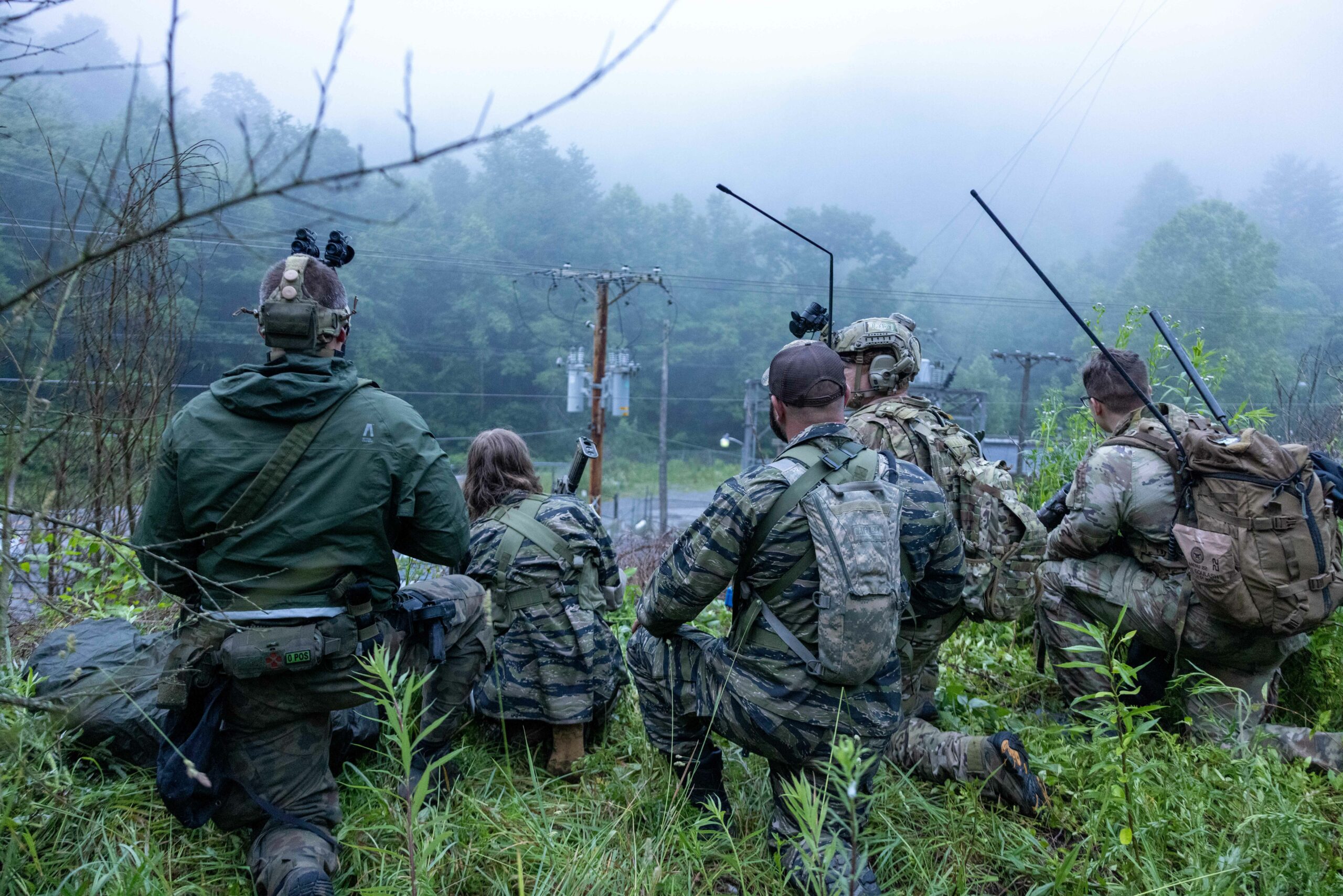The US Army National Guard conducted a Special Forces exercise in West Virginia to upskill in counterinsurgency operations, irregular warfare, and interoperability with foreign forces.
Participants included over 420 soldiers, mainly from the Utah-based 19th Special Forces Group (SFG), and warfighters from 16 partner countries.
“Irregular warfare is actually a difficult term to describe because there’s no doctrinal [definition] for irregular warfare,” a 19th SFG operations sergeant major explained.
“It’s designed to be very broad because it includes hybrid threats, it includes security force assistance and doing not only counterinsurgency and unconventional warfare, but also doing foreign internal defense.”
Realistic Special Operations Exercise
Mission sets and outcomes throughout the exercise were interconnected.
Soldiers operated as simulated “nation” groups and completed missions alongside actual local government officials, law enforcement, and emergency services personnel.
Lessons consisted of economic and political scenarios in each “nation” through preplanned media engagements and newscasts, for which groups were required to respond and conduct procedures possible for actual deployments.
Information from these situations was used as the basis of the entire training, such as in countering a simulated invasion by opposing forces (OPFOR) from neighboring “nations.”

“The change in the scenario replicates what our forces would experience if they were in a friendly country about to be invaded by a hostile force,” the sergeant major explained.
“What the OPFOR brings to the exercise is kind of a realistic aspect to it,” a 19th SFG staff sergeant on an opposing team said.
“We’re able to do our own planning against what we know or think that the partner force of the ODA (operational detachment alpha) is doing. And so, it’s more realistic of how an enemy would react to those situations.”
‘Full-Spectrum Warfare’ Training
Additional lessons tied into more significant, service-wide shifts between the US Army and the Army National Guard to prepare for counterinsurgency operations against near-peer threats and potential large-scale deployments.
“This is full-spectrum warfare. It’s preparing for invasion or preparing the territories that we would operate in, in order to facilitate conventional battle lines,” the sergeant major stated.
“Irregular warfare is our way to do that through more low visibility operations and our ability to work around the civilian populace and provide that support to the conventional military.”
“You have to get very resourceful and kind of adapt to the changing environment and realize that you don’t have the freedom of movement that we did in other places. It’s no longer about having air supremacy. It’s no longer about having open comms with higher [headquarters].”












